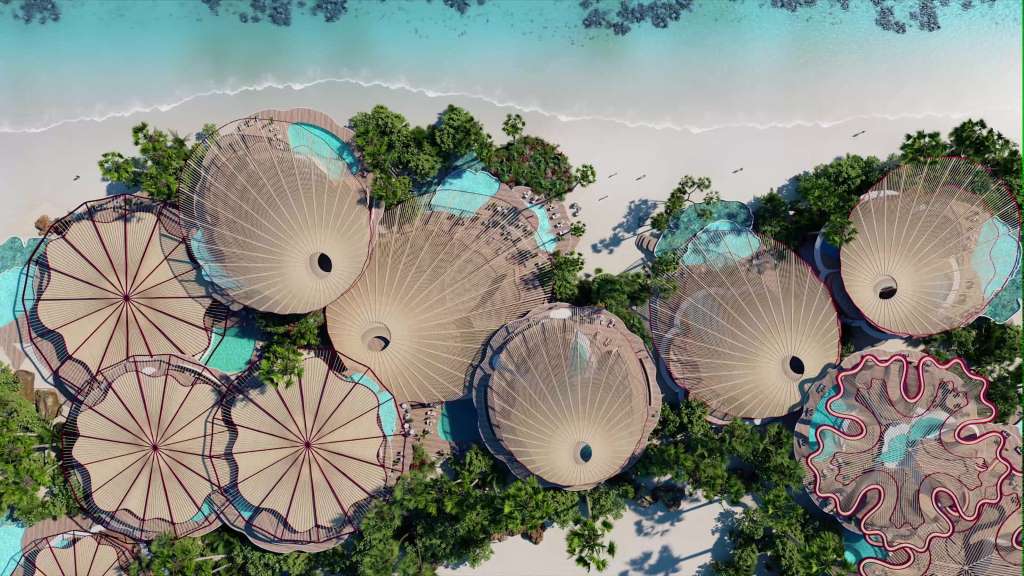
Foster + Partners Has Just Designed the Ultimate Sustainable Getaway in Saudi Arabia
When it comes to innovation, one always thinks about the rise of future mechanics and inventions–a new world dominated by high-tech cogs and machinery. But it should be a primary thought that truly effective innovation brings a rainbow of ideas together, making a powerful hybrid piece that’s adaptable to a future where nature and technology are required to work in harmony. In Saudi Arabia, The Red Sea Project aims to create exactly this, using sustainable architecture. Last 2018, the Public Investment Fund (PIF) of Saudi Arabia created The Red Sea Development Company (TRSDC), a closed joint-stock company entirely owned by the PIF and created for developing The Red Sea Project for Saudi Arabia’s West Coast regenerative tourist destination.
By January 2020, TRSDC fostered an ambitious collaboration with the global architecture giant Foster + Partners (also famous for its sustainable architecture, urbanism, engineering, and design work) to create Coral Bloom, a stunning luxury development on the dolphin-shaped Shurayrah Island.
Sweeping the archipelago full of 90 islands developed by TRSDC, Coral Bloom is a collection of 11 hotels designed to mirror the unique and beautiful biodiversity found only in Saudi Arabia. Overall, these hotels give the impression of driftwood pieces that have been washed up ashore and nestled on top of the beach dunes.
Along with its spectacular designs, these hotels all lack the high-rise element of the usual hotel to ensure the vistas remain uninhibited and give a sense of mystery to the first-time visitor. This type of design also keeps the development footprint to a minimum and instead enhances the island’s natural features without damaging the habitats or natural shores. The only change brought on by this sustainable development was the creation of new beaches alongside a new lagoon which will work as another defensive layer against rising sea levels. Otherwise, Coral Bloom considers the biodiversity above all and was designed to keep the disruption of the island’s mangroves and other habitats to a stark minimum.
According to Foster + Partner’s Head of Studio, Gerard Everden, Coral Bloom is named as such for the use of materials that are low impact and ensures protection over the environment and the enhancement of the natural surroundings. The materials used are lightweight and have a thermal mass. These were also made off-site to diminish harmful effects on the environment and to provide more energy-efficient construction.
TRSDC CEO John Pagano meanwhile adds that Shurayah Island is the gateway to The Red Sea Project, working as an immersive luxury development that strongly hinges on barefoot experience.
“It’s important that it sets the standard in ground-breaking architecture and sustainable design, not just for our destination, but globally too.” says Pagano, “This is achieved by going beyond simply protecting the environment to applying a regenerative approach to the project.”
By 2040, the sustainable luxury development promises a 30% net conservation benefit. Coral Bloom is entirely powered by renewables and aims to create the world’s largest district cooling plant which would be powered all through the day by renewable energy and ensures efficient centralized cooling across the destination.
Considering its impact on the traveling industry, Coral Bloom’s designs are also an innovative approach to the pandemic’s effects. One feature in these hotels is the lack of internal corridors, a design resulting from the growing need for seclusion and space. The Red Sea Project is expected to finish the first few resorts by 2022 but Shurayah Island is just one of the many developments to rise in this archipelago.
Upon completion in 2030, the Red Sea Project is reported to have 50 resorts with over 8,000 hotel rooms and 1,300 residential properties spanning 22 islands and six inland sites. The archipelago’s natural state is already an art piece made entirely by nature. The Coral Bloom development is merely a man-made extension of nature’s artistry, demonstrated by sustainable architecture.


